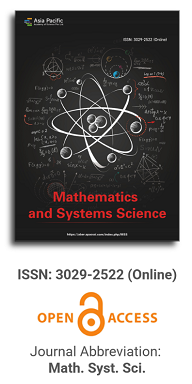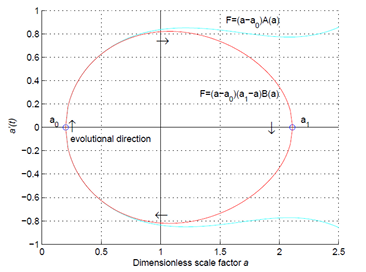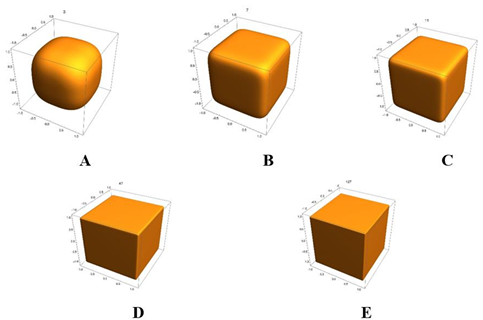


A novel tucker decomposition driven taxi travel demand forecasting algorithm
Vol 2, Issue 2, 2024
Download PDF
Abstract
This research aims to enhance taxi travel demand forecasting for sustainable urban traffic management and planning. We extend the Seasonal Autoregressive Integrated Moving Average model into a high-dimensional tensor form by treating the urban transport network as a Euclidean space and introducing Tucker decomposition. This novel approach, both theoretically significant and practically applicable, represents time series data as tensors to better capture multimodal structures and correlations, improving predictive accuracy. Tucker decomposition reduces computational complexity and memory requirements, making it ideal for large-scale urban traffic network prediction. Experiments on six real-world datasets show that the model’s MAE and RMSE are reduced by about 39.43% and 27.01% on average, respectively, compared to the baseline model. Notably, the model is computationally very efficient and takes only a relatively short time to train., suitable for real-time traffic management, congestion mitigation, and resource optimization. In summary, this work innovates time series analysis, providing an efficient and precise tool for urban traffic management and planning, contributing to sustainable urban transportation advancement.
Keywords
References
- Cheng Z, Jian S, Rashidi T H, et al. Integrating household travel survey and social media data to improve the quality of od matrix: A comparative case study. IEEE Transactions on Intelligent Transportation Systems, 2020, 21(6): 2628-2636.doi: 10.1109/TITS.2019.2958673
- Xu Z, Li J, Lv Z, et al. A classification method for urban functional regions based on the transfer rate of empty cars. IET Intelligent Transport Systems, 2022, 16(2): 133-147. doi: 10.1049/itr2.12134
- Lv Z, Li, J, Dong C, Li H, et al. Deep learning in the COVID-19 epidemic: A deep model for urban traffic revitalization index. Data & Knowledge Engineering, 2021,135, 101912. doi: 10.1016/j.datak.2021.101912
- Li J, Lv Z, Ma Z, Wang X, et al. Optimization of spatial-temporal graph: A taxi demand forecasting model based on spatial-temporal tree. Information Fusion, 2024,104, 102178. doi: 10.1016/j.inffus.2023.102178
- Lv Z, Ma Z, Xia F, et al. A transportation Revitalization index prediction model based on Spatial-Temporal attention mechanism. Advanced Engineering Informatics,2024, 61, 102519. doi: 10.1016/j.aei.2024.102519
- Li H, Lv Z, Li J, et al. Traffic flow forecasting in the covid-19: A deep spatial-temporal model based on discrete wavelet transformation. ACM Transactions on Knowledge Discovery from Data, 2023, 17(5): 1-28.doi: 10.1145/3564753
- Xu Z, Lv Z, Chu B, et al. Progress and prospects of future urban health status prediction. Engineering Applications of Artificial Intelligence, 2024,129, 107573. doi: 10.1016/j.engappai.2023.107573
- Xu Z, Lv Z, Li J, et al. A novel approach for predicting water demand with complex patterns based on ensemble learning. Water Resources Management, 2022, 36(11): 4293-4312. doi: 10.1007/s11269-022-03255-5
- Lv Z, Wang X, Cheng Z, et al. A new approach to COVID-19 data mining: A deep spatial–temporal prediction model based on tree structure for traffic revitalization index. Data & Knowledge Engineering, 2023, 146: 102193. doi: 10.1016/j.datak.2023.102193
- Sheng Z, Lv Z, Li J, et al. Taxi travel time prediction based on fusion of traffic condition features. Computers and Electrical Engineering, 2023, 105: 108530. doi: 10.1016/j.compeleceng.2022.108530
- Li Y, Li J, Lv Z, et al. GASTO: A fast adaptive graph learning framework for edge computing empowered task offloading. IEEE Transactions on Network and Service Management, 2023, 20(2): 932-944. doi: 10.1109/TNSM.2023.3250395
- Lv Z, Li J, Xu Z, et al. Parallel computing of spatio-temporal model based on deep reinforcement learning,International Conference on Wireless Algorithms, Systems, and Applications. Cham: Springer International Publishing, 2021: 391-403.doi: 10.1007/978-3-030-85928-2_31
- Xu Z, Lv Z, Chu B, et al. Fast autoregressive tensor decomposition for online real-time traffic flow prediction. Knowledge-Based Systems, 2023, 282: 111125. doi: 10.1016/j.knosys.2023.111125
- Lv Z, Cheng Z, Li J, et al. TreeCN: time series prediction with the tree convolutional network for traffic prediction. IEEE Transactions on Intelligent Transportation Systems, 2023. doi: 10.1109/TITS.2023.3325817
- Ye R, Lv Z, Xu Z, et al. MT-CNN: A Lightweight Spatial-Temporal Convolutional Neural Network for Deep Learning of Complex Trajectory Distributions based on Area Partitioning,2024 International Joint Conference on Neural Networks (IJCNN). IEEE, 2024: 1-8.doi: 10.1109/IJCNN60899.2024.10651261
- Xu Z, Lv Z, Chu B, et al. A Fast Spatial-temporal Information Compression algorithm for online real-time forecasting of traffic flow with complex nonlinear patterns. Chaos, Solitons & Fractals, 2024, 182: 114852. doi: 10.1016/j.chaos.2024.114852
- Cyril A, Mulangi R H, George V. Modelling and forecasting bus passenger demand using time series method,2018 7th international conference on reliability, infocom technologies and optimization (trends and future directions)(ICRITO). IEEE, 2018: 460-466.doi: 10.1109/ICRITO.2018.8748443
- Jiao P, Li R, Sun T, et al. Three revised Kalman filtering models for short‐term rail transit passenger flow prediction. Mathematical Problems in Engineering, 2016, 2016(1): 9717582.doi: 10.1155/2016/9717582
- Milenković M, Švadlenka L, Melichar V, et al. SARIMA modelling approach for railway passenger flow forecasting. Transport, 2018, 33(5): 1113-1120.doi: 10.3846/16484142.2016.1139623
- Sun Y, Leng B, Guan W. A novel wavelet-SVM short-time passenger flow prediction in Beijing subway system. Neurocomputing, 2015, 166: 109-121.doi: 10.1016/j.neucom.2015.03.085
- Wang X, An K, Tang L, et al. Short term prediction of freeway exiting volume based on SVM and KNN. International Journal of Transportation Science and Technology, 2015, 4(3): 337-352. doi: 10.1260/2046-0430.4.3.337
- Hou Y, Edara P, Chang Y. Road network state estimation using random forest ensemble learning, 2017 IEEE 20th International Conference on Intelligent Transportation Systems (ITSC). IEEE, 2017: 1-6.doi: 10.1109/ITSC.2017.8317743
- Joubert J W, De Waal A. Activity-based travel demand generation using Bayesian networks. Transportation Research Part C: Emerging Technologies, 2020, 120: 102804.doi: 10.1016/j.trc.2020.102804
- Guo G, Zhang T. A residual spatio-temporal architecture for travel demand forecasting. Transportation Research Part C: Emerging Technologies, 2020, 115: 102639.doi: 10.1016/j.trc.2020.102639
- Li X, Xu Y, Zhang X, et al. Improving short-term bike sharing demand forecast through an irregular convolutional neural network. Transportation research part C: emerging technologies, 2023, 147: 103984. doi: 10.1016/j.trc.2022.103984
- Zhao T, Huang Z, Tu W, et al. Coupling graph deep learning and spatial-temporal influence of built environment for short-term bus travel demand prediction. Computers, Environment and Urban Systems, 2022, 94: 101776.doi: 10.1016/j.compenvurbsys.2022.101776
- Xu Z, Lv Z, Li J, et al. A Novel Perspective on Travel Demand Prediction Considering Natural Environmental and Socioeconomic Factors. IEEE Intelligent Transportation Systems Magazine (April 2022), 2-25. 2022. doi: 10.1109/MITS.2022.3162901
- Tang J, Gao F, Liu F, et al. Understanding spatio-temporal characteristics of urban travel demand based on the combination of GWR and GLM. Sustainability, 2019, 11(19): 5525.doi: 10.3390/su11195525
- Wang D, Yang Y, Ning S. DeepSTCL: A deep spatio-temporal ConvLSTM for travel demand prediction,2018 international joint conference on neural networks (IJCNN). IEEE, 2018: 1-8.doi: 10.1109/IJCNN.2018.8489530
- Liang J, Tang J, Gao F, et al. On region-level travel demand forecasting using multi-task adaptive graph attention network. Information Sciences, 2023, 622: 161-177. doi: 10.1016/j.ins.2022.11.138
- Zhang J, Zheng Y, Qi D. Deep spatio-temporal residual networks for citywide crowd flows prediction, Proceedings of the AAAI conference on artificial intelligence. 2017, 31(1). doi: 10.1609/aaai.v31i1.10735
- Yao H, Tang X, Wei H, et al. Revisiting spatial-temporal similarity: A deep learning framework for traffic prediction, Proceedings of the AAAI conference on artificial intelligence. 2019, 33(01): 5668-5675.doi: 10.1609/aaai.v33i01.33015668
- Liu L, Qiu Z, Li G, et al. Contextualized spatial–temporal network for taxi origin-destination demand prediction. IEEE Transactions on Intelligent Transportation Systems, 2019, 20(10): 3875-3887.doi: 10.1109/TITS.2019.2915525
Supporting Agencies
Copyright (c) 2024 Benjia Chu, Hongyu Yan
License URL: https://creativecommons.org/licenses/by/4.0/
Editor-in-Chief

Prof. Youssri Hassan Youssri
Cairo University, Egypt
Asia Pacific Academy of Science Pte. Ltd. (APACSCI) specializes in international journal publishing. APACSCI adopts the open access publishing model and provides an important communication bridge for academic groups whose interest fields include engineering, technology, medicine, computer, mathematics, agriculture and forestry, and environment.


.jpg)

.jpg)
